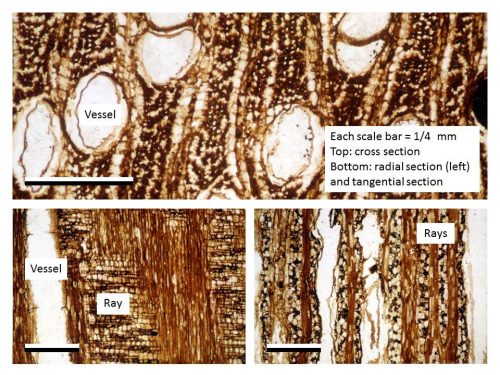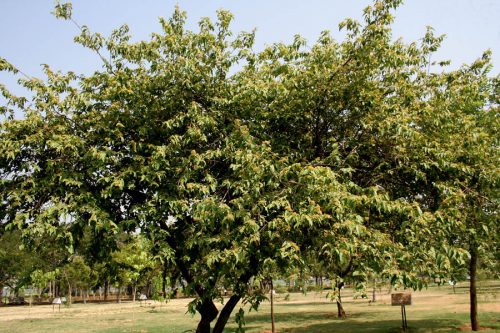
This Fossil Friday we are lucky to be showcasing an Early Miocene fossil wood specimen from the Lirio East locality, Cucaracha Formation. To identify the wood, different cuts (sections) were made. Paleobotany Intern Chris Nelson explains, “You need to cut the wood at three different angles: cross section, radial section, and tangential section. The cross section is the one people are most used to seeing (a cut perpendicular to the height of the tree, often showing growth rings if they are present). The radial section is perpendicular to the cross section (parallel to the height of the tree) and ideally goes through the center of the tree’s trunk (i.e. it is a diameter or radius). The tangential section is similar to the radial section but does not go through the center, so it catches the anatomical features at a third angle (a cut that is tangent to a growth ring). After you have those three views, you can examine the anatomy.”

The tree from which this wood came likely belongs to the genus Guazumaoxylon of the family Malvaceae, which includes okra and cotton. A modern relative of this tree, Guazuma, is found throughout the Neotropics. Members of this genus are pioneering tree species, meaning that they are one of the first species to colonize a disturbed area.
To read more about similar fossil wood from the Hodges Hill locality, check out the paper here.
0 responses to “Fossil Friday 2/13/15: Fossil Wood”